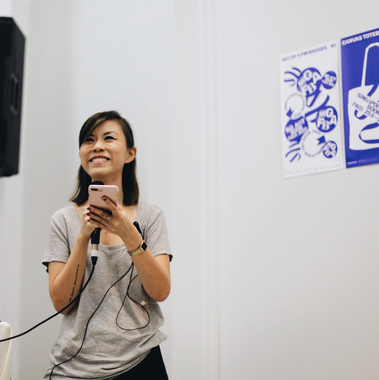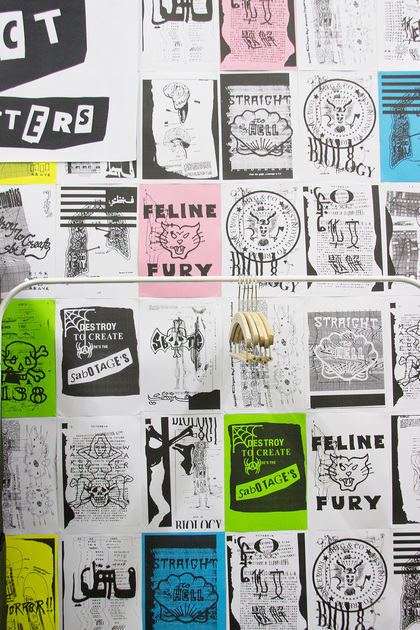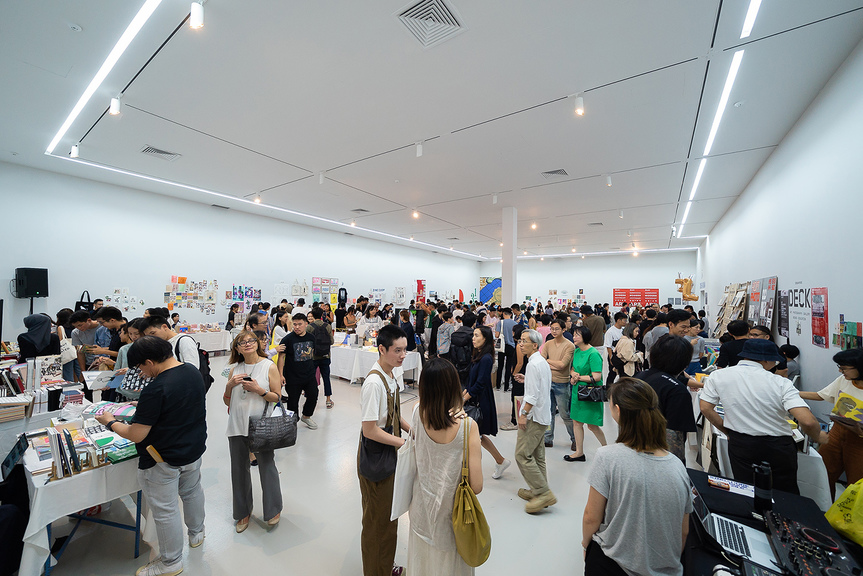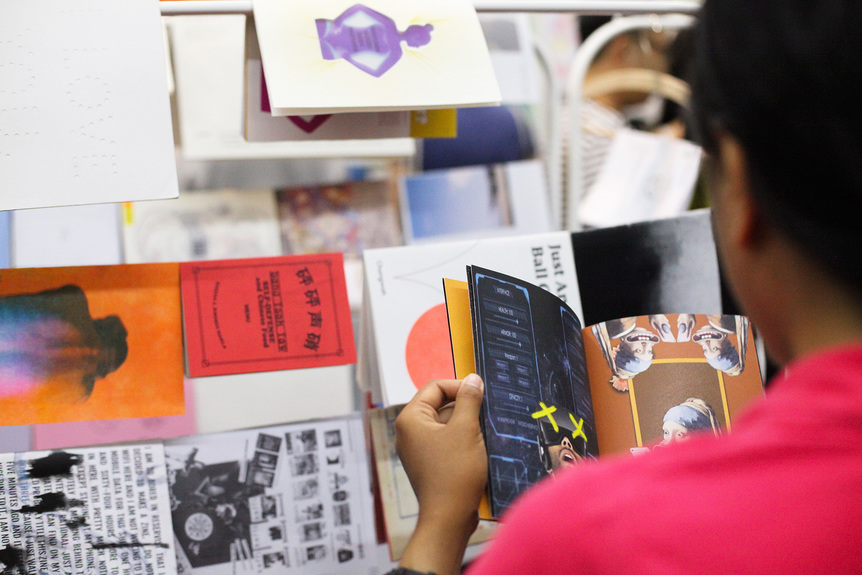
R
E
V N
E
X
T
The 2018 Singapore Art Book Fair (SGABF) may have ended on July 1, but the work is just beginning for Renée Ting, director of the festival, and her team.
SGABF was established in 2013 in association with Singapore’s beloved independent bookstore BooksActually, and has since become an annual mainstay in Singapore’s indie literary, art and design calendar.
At a time when fairs are coming and going in waves, however, change is a necessary part of sustainability. For the first time, this year’s SGABF was held completely independently. This move is a part of Ting’s long-term plan to set a new course for the event.
Ting helmed the fair with a small team while she was at BooksActually, overseeing its launch, but decided to take the fair under her sole direction when she left the bookstore in 2017. Speaking with ArtAsiaPacific, Ting said, “The direction for me is that I want to represent works that will encourage a deeper appreciation and understanding of art, art books and publishing in Singapore.” Ting observed that, in Singapore, there are a large number of people who find art in all its forms inaccessible. “The Singapore Art Book Fair aims to be a middle ground. You don’t even have to be remotely interested in the arts or anything but there is something for everyone,” she said.
Ting’s benchmarks are the likes of the New York Art Book Fair and Tokyo Art Book fair, which have been running for almost a decade in the case of Tokyo, and 13 years in New York. These fairs have “created a culture of [their] own,” with strong followings in their respective countries.
As of now, the SGABF is still targeting the creative community—designers, artists, illustrators, art students—as its main demographic. For the future, Ting envisions making the fair such a norm that you could ask anybody on the street and they would understand or have heard about it. She surmised that it would probably take another ten years to get there, and publicity efforts such as advertisements at bus stops and train stations would help to do so. However, since this is her first year organizing the fair without any commercial or government funding, she is trying to recalibrate slowly before growing.
Yet, the changes made under her hand are already clearly noticeable. Last year’s SGABF was held in the white-walled indoor space of Block 9 at the arts enclave Gillman Barracks. The Proleteriat Poetry Factory, a collective comprising around 20 local poets, sat behind old-school typewriters and churned out one-of-a-kind poems based on key words suggested by visitors. The event would have been far more at home at the Singapore Writers Festival. In fact, the incessant noise generated by the poet’s shouting and typing made the already bustling and crowded space feel more closed off and not exactly ideal for browsing. SGABF 2018 unfolded in a much more accommodating environment—the exhibition hall of the NTU Centre for Contemporary Art Singapore—and boasted over 60 exhibitors both local and international, almost doubling the number of participants of the previous year. According to the organizers, visitorship to this year’s fair also doubled, with a number of 4,200 attendees being tallied, though, reportedly, the 2016 edition at the ArtScience Museum saw 8,000 visitors, suggesting that location is key.
Another first at SGABF 2018 was a room dedicated to zines, presented in collaboration with Squelch Zines, a community platform for zine makers in Singapore. This was evidence of Ting’s vision of the fair as an indie platform that supports the culture of print as a counterpoint to our current digital age. “Digital culture has pushed us so far and so fast in this very clinical environment where you take trains and buses, and everybody is on their phones. You go for social gatherings and everybody is on their phone,” Ting pointed out. She believes that it will take a very long time to bring printed matter back as a part of mainstream culture but groups of creatives are making an effort to return to such mediums, which they see as part of a more present and connected lifestyle.
She described the reassertion of the importance of print and reading culture as a “battle we will be fighting for the next 50 to 100 years,” adding: “With everybody doing their own thing, something will happen. It’s just that we may not be around to see it. But that doesn’t mean we stop, we just have to keep working at it […] Let’s say 50 years from now, we live in a culture that is the fruit of our labor, so why not.”
To read more of ArtAsiaPacific’s articles, visit our Digital Library.






